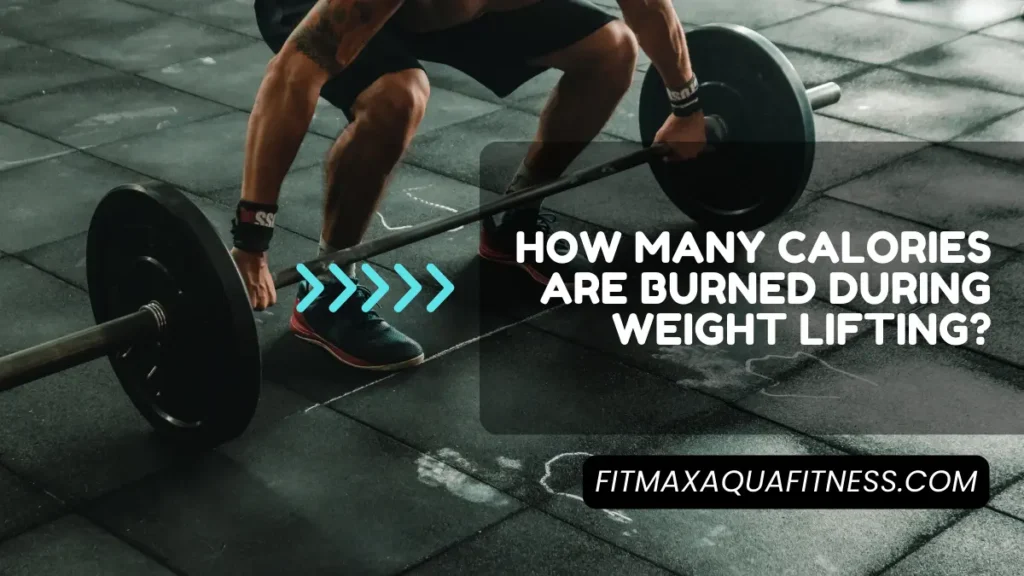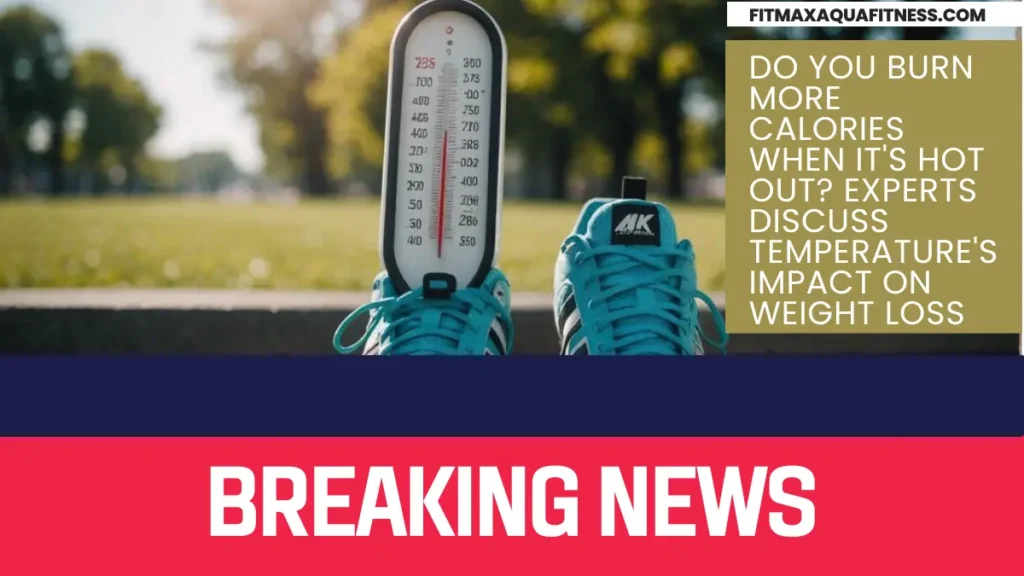Table of Contents
ToggleIntroduction
Do you know How Many Calories Are Burned During Weight Lifting? Weight lifting, also known as strength training, is a fundamental component of fitness regimens worldwide. It involves using resistance to improve muscle strength, endurance, and overall body composition. This type of exercise has become very popular because of its many benefits and its ability to contribute to a well-rounded fitness program.
Understanding how many calories you burn during weight lifting is important if you want to make the most of your workouts. While many people think of cardiovascular exercises as the best way to burn calories, it’s also crucial to understand how much energy you’re using during weight lifting sessions. By learning about calorie burn in weight lifting, you can effectively include this exercise in your overall fitness plan.
In this article, we will explore the details of calorie burn in weight lifting so that you can:
- Understand how many calories you can expect to burn during your workouts
- Learn how different factors such as intensity and duration affect calorie expenditure
- Discover strategies for maximizing calorie burn during weight lifting sessions
- Determine how weight lifting compares to other forms of exercise in terms of calorie expenditure
With this knowledge, you’ll be able to make informed choices about your workout routines and customize your fitness plan to reach specific goals. Whether you’re focusing on getting stronger, managing your weight, or improving your overall health, understanding the impact of weight lifting on calorie burn will help you get the most out of this dynamic exercise.

How Many Calories Are Burned During Weight Lifting?
Understanding the Factors Influencing Calorie Burn
When it comes to weight lifting, it’s important to know how many calories you can burn. This knowledge will help you make the most of your workouts and achieve your fitness goals.
1. The Energy Systems at Work
Unlike cardiovascular exercises that mainly rely on the aerobic energy system and burn more calories during the activity itself, weight lifting primarily uses the anaerobic energy system. This results in a different metabolic response, where the calorie burn during the actual workout may seem lower compared to cardio exercises.
2. The Role of Intensity
Weight lifting is an anaerobic exercise that involves high-intensity movements like lifting heavy weights or doing explosive reps. These types of movements require a lot of energy in a short amount of time.
Unlike aerobic activities where you burn calories during the workout, weight lifting may not show immediate calorie expenditure. However, it has a long-lasting effect on your metabolism and energy expenditure even after you finish your workout.
3. The Afterburn Effect
By participating in weight lifting, you not only burn calories during the session but also stimulate muscle growth and repair. The growth of lean muscle mass helps increase your resting metabolic rate, which means your body continues to burn more calories even after you’ve finished your weight lifting session. This increase in metabolism is important for understanding the calorie burn from weight lifting and its impact on long-term energy usage.
Other Factors That Affect Caloric Expenditure in Weight Lifting
The number of calories burned during weight lifting can vary based on several factors such as intensity, duration, and individual characteristics. While it’s challenging to provide exact numbers, we can estimate the calorie burn range for different weight lifting activities based on research and calculations.
Here are some other key factors that can affect how many calories you burn while weight lifting:
- Body Weight and Fitness Level: Your body weight and fitness level play a role in determining how many calories you burn during a weight lifting session. Generally, individuals with higher body weights or lower fitness levels may burn more calories due to the increased effort required to perform the exercises. This Everyday Health article provides more insight into the various factors that influence caloric expenditure.
- Muscle Mass: Having a higher muscle mass can contribute to increased metabolic rate and overall energy expenditure throughout the day, including during exercise. This means that individuals with more muscle may burn more calories while weight lifting compared to those with less muscle mass. A study published in the National Center for Biotechnology Information highlights the relationship between muscle mass and caloric expenditure.
- Impact on Fat Loss: Weight lifting not only burns calories during exercise but also has a lasting impact on fat loss. Research cited in this Medical News Today article suggests that weight training can help with fat loss by increasing muscle mass, improving metabolism, and promoting overall health.
- Long-Term Benefits: Incorporating weight training into your fitness routine offers long-term benefits beyond just caloric expenditure. The New York Times highlights how weight training can aid in fat loss, improve bone density, enhance cognitive function, and reduce the risk of chronic diseases.
Considering these factors, it’s evident that weight lifting not only helps burn calories during the workout but also has a positive impact on overall health and well-being.
Do you burn calories when it’s hot out? Experts discuss temperature’s impact on weight loss
Measuring Calorie Burn in Weight Lifting: Methods and Considerations
When it comes to measuring calorie burn during weight lifting, various methods and considerations come into play. Here’s an overview of how to calculate calories burned during weight lifting sessions:
1. Calculating Calories Burned Based on MET Values
MET Values (Metabolic Equivalent of a Task) are often used to estimate the energy expenditure of different activities, including resistance training. Each activity is assigned a MET value, which represents the ratio of the metabolic rate during a specific activity to the resting metabolic rate.
For weight lifting, the MET value varies depending on factors such as the intensity of the exercise, the specific movements performed, and the individual’s body weight.
2. Using Formulas and Approaches
Different formulas and approaches can be used to calculate calories burned during weight lifting based on MET values and other factors:
- Equations that take into account the amount of weight lifted, the number of sets and repetitions, and the duration of rest periods between sets.
- Some advanced fitness trackers and wearable devices use algorithms that consider these variables to provide estimates of calorie expenditure during resistance training.
3. Key Variables to Consider
Several variables play a role in determining calorie burn during weight lifting:
- The amount of weight lifted: Heavier weights generally result in greater energy expenditure.
- Rest periods between sets: Shorter rest periods may lead to a higher metabolic demand and increased calorie burn throughout the workout.
4. Understanding Limitations
It’s important to note that calculating calories burned during weight lifting has inherent limitations due to individual variations:
- Metabolism: Different people have different metabolic rates.
- Muscle composition: Muscle fiber composition can affect calorie burn.
- Exercise efficiency: Some individuals may be more efficient at performing certain exercises than others.
The accuracy of calorie estimation methods can also be influenced by factors such as technique proficiency, workout intensity, and individual fitness levels.
By understanding these methods and considerations for measuring calorie burn during weight lifting, individuals can gain insights into the energy demands of their resistance training sessions and make informed decisions about workout intensity and program design.
Limitations of Calorie-Calculation Methods in Weight Lifting
Estimating the calorie burn during weight lifting sessions can be challenging due to various factors that influence metabolism and individual variations. While calorie-calculation methods based on MET values and other factors provide a rough estimate, it’s important to acknowledge their limitations and potential inaccuracies.
Here are some key points to consider regarding the limitations of calorie-calculation methods in weight lifting:
- Individual Variations: Each person’s metabolic rate and response to exercise can vary significantly. Factors such as age, gender, body composition, and genetics play a role in determining how many calories are burned during weight lifting. Calorie-calculation methods may not account for these individual differences accurately.
- Intensity and Effort: Weight lifting intensity can vary based on factors such as load, number of repetitions, rest periods, and overall workout vigor. Calorie-calculation methods often use average values or estimations for these variables, which may not reflect the actual effort exerted by an individual during their specific weight lifting session.
- Anaerobic Nature of Weight Lifting: Weight lifting primarily utilizes the anaerobic energy system, relying on stored energy sources rather than oxygen consumption. This leads to a different metabolic response compared to aerobic exercises where more calories may be burned during the activity itself. Traditional calorie-calculation formulas may not accurately capture this metabolic difference.
- Muscle Adaptation and Efficiency: As individuals become more experienced and trained in weight lifting, their muscles adapt and become more efficient at performing the exercises. This adaptation can lead to decreased calorie burn compared to when they first started weight lifting. Calorie-calculation methods may not factor in this adaptive response.
- Equipment Accuracy: Calorie burn estimates provided by fitness equipment such as treadmills or ellipticals that incorporate weight lifting movements may not be entirely accurate. The equipment may not consider individual differences and often rely on generalized formulas.
It’s important to note that while calorie-calculation methods have limitations, they can still provide a general idea of the calorie burn during weight lifting sessions. However, it’s advisable to use them as a starting point and adjust based on personal experience and observations. Monitoring changes in body composition, energy levels, and overall progress can be more informative indicators of the effectiveness of weight lifting in achieving fitness goals.
Weightlifting in Older Age: A Path to Long-Lasting Muscle Strength and Health
How Weight Lifting Compares to Other Workouts in Terms of Caloric Expenditure
Key Differences in Calorie Burn Between Weight Lifting and Cardiovascular Exercises like Running or Cycling, which primarily rely on the aerobic energy system.
- Weight lifting, as an anaerobic activity, initially burns fewer calories during the workout compared to cardiovascular exercises.
- The metabolic response during weight lifting is distinct from that of aerobic exercises due to the reliance on different energy systems.
The concept of EPOC (Excess Post-Exercise Oxygen Consumption) and how it may contribute to additional calories burned after high-intensity weight lifting sessions.
- EPOC refers to the elevated calorie burn that continues after the workout as the body works to restore oxygen levels, repair tissues, and replenish energy stores.
- High-intensity weight lifting can lead to a significant EPOC effect, contributing to a continued calorie burn post-exercise compared to traditional steady-state cardio workouts.
These factors highlight the unique caloric expenditure patterns associated with weight lifting and its potential for sustained metabolic impact beyond the actual workout session.
Maximizing Calorie Burn Through Effective Weight Lifting Strategies
When it comes to maximizing calorie burn during weight lifting, a few key strategies can make a significant difference in the intensity and effectiveness of your workout. Here are some essential tips to help you elevate the calorie-burning potential of your weight lifting sessions:
1. Dynamic Movements and Supersets
Incorporating dynamic movements and supersets into your strength training routine can significantly elevate the intensity of your workout. By seamlessly transitioning between different exercises or incorporating movements that engage multiple muscle groups simultaneously, you can increase the overall energy expenditure during your session.
2. Proper Form and Technique
While focusing on maximizing calorie burn, it’s crucial to maintain proper form and technique in weight lifting. This not only ensures safety and reduces the risk of injury but also enhances the effectiveness of each exercise. By performing each movement with precision and control, you can optimize muscle engagement and overall calorie expenditure.
By implementing these strategies, you can effectively enhance the calorie-burning potential of your weight lifting workouts while prioritizing safety and technique for long-term progress and results.
The Overall Impact of Weight Lifting on Fat Loss Journey
Weight lifting has a significant impact on the journey of losing fat. Here’s how it contributes to the fat loss process:
- Calories Burned: Weight lifting helps burn calories during the activity itself.
- Muscle Preservation: It also plays a crucial role in preserving or increasing lean muscle mass.
- Metabolic Rate: Lean muscle mass is important for maintaining metabolic rate, which affects how many calories your body burns at rest.
Note: A higher metabolic rate means you burn more calories throughout the day, even when you’re not exercising.
It’s important to combine regular exercise, including both strength training and cardiovascular work, with a balanced diet to achieve a sustainable calorie deficit for long-term weight management.
Supporting Your Weight Lifting Routine with Proper Nutrition
When it comes to supporting your weight lifting routine, proper nutrition plays a vital role in optimizing performance and facilitating recovery. Here are some key points to consider:
1. Key Nutritional Considerations
Ensuring adequate protein intake is crucial for supporting muscle repair and growth, which is essential for individuals engaging in weight lifting. Protein provides the building blocks necessary for muscle recovery and adaptation to the demands of strength training.
2. Individual Nutritional Needs
It’s important to recognize that nutritional requirements can vary based on factors such as training intensity, specific fitness goals, and overall energy expenditure, including the calories burned during weight lifting sessions. Tailoring your nutritional approach to align with your unique needs can enhance the effectiveness of your weight lifting routine.
By paying attention to these nutritional aspects, you can effectively complement your weight lifting efforts and maximize the benefits derived from your training regimen.
Conclusion
- Embrace weight lifting as a valuable component of your fitness journey, focusing on strength development and overall well-being.
- Remember that the benefits of weight lifting go beyond just calorie burn, contributing to muscle development and overall health.
- Incorporate weight lifting into your fitness routine to achieve your fitness goals effectively and holistically.





